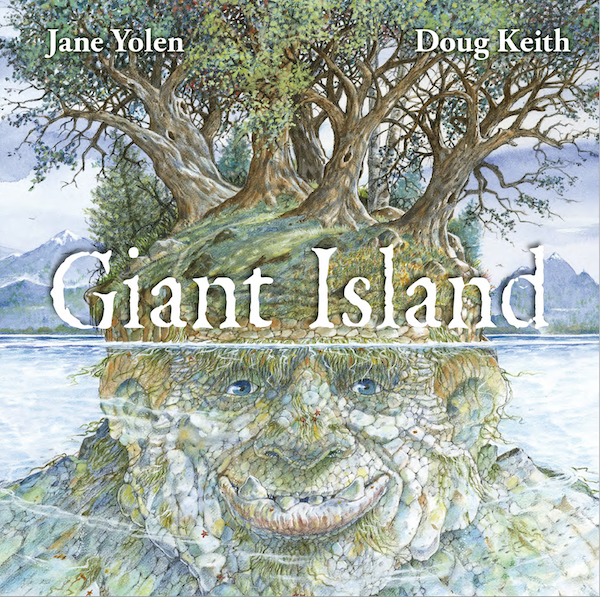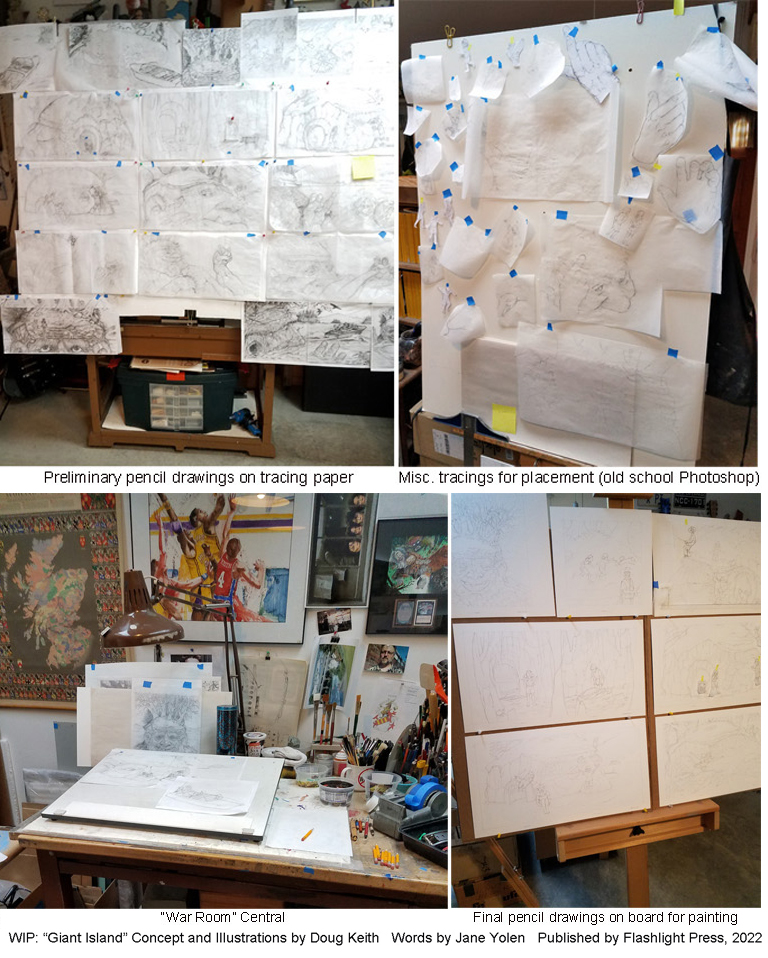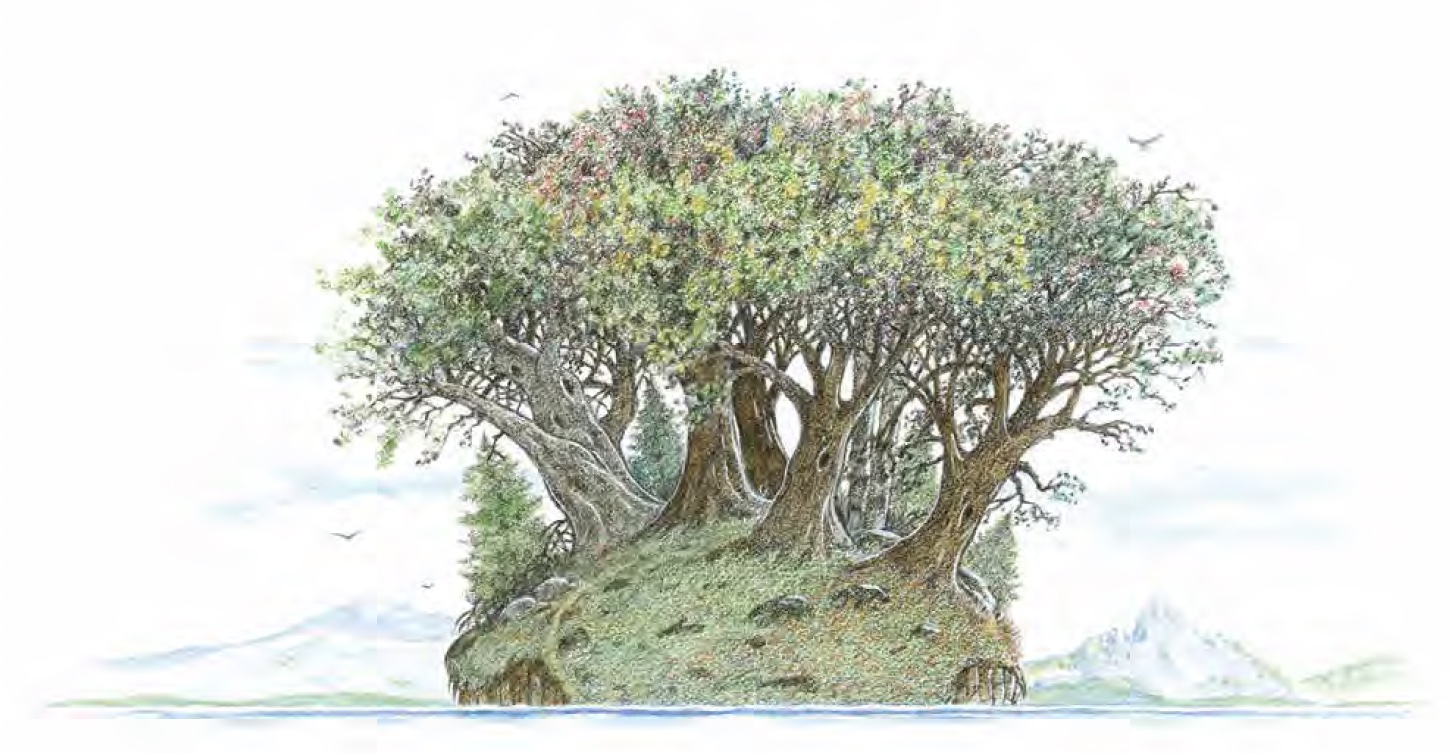
Jane: I think there are any number of ways into a piece of creative writing. A few are nature, politics, poetry, newspapers, overheard conversations, family history, dreams, fears, loves, questions about science, personal experiences, and sometimes an editor's suggesion. I have used all of those and more. But particularly that last one influenced the writing of Giant Island.
An editor I did not know, from a publishing company I had never been aware of, contacted me to write the texts around some gorgeous paintings by an artist who's work I did not know. Talk about pressure!!!
But in many ways that story was right in my wheelhouse. Lyrical/magical picture books are my sweet spot. Yes, I have written books of poetry, science, historical novels, fantasy, science fiction, craft books, verse novels, graphic novels, nonfiction, etc. But an island that is also a giant—right in my sweet spot. The prompts were the pictures of course. They already told the story. But I gave the words wings.

Jane: When I teach wrting the picture book, I take my students outside. If it is my house, outside is a fourteen-acre farm and wildernerss where bears, and deer, and bobcats, and rabbits, and coyotes, foxes, opposum, and all kinds of birds roam. And I say to the students, "If you cannot come back after an hour with ten ideas for books—you aren't trying hard enough. Or you are not being open enough to what is suggested here." I give them a quick sample. "There is a lone dandelion. Where are all the others? There is a hawk circling above us. What is he lookong for? There is a river running by the edge of the property. What is swimming in it? Oh—there is a small group of female turkeys. Can you see the dinosaur in them?" And then I warn therm—you may come back with ten ideas, but that is only the beginnning.
e: What happens next?
Jane: Triage.
You need to separate which ideas are viable, which ideas are shaky, which are DOA. Dead On Arrival. (But a hint...sometimes many years later, the dead idea, like a revenant, arises from its shallow grave.) How do I know this? Recently I have been going over old, discarded manuscripts and finding gems. Partly, I am better at writing than I was when I wrote the ideas so many years ago. Or the publishers have changed their want list. Or the editor who buys it wasn't born when I had that idea. Or....or....or...the world keeps turning and something that was not on anyone's radar, now is.
e: That's inspiring, Jane - good advice!

Keith: The medium I used for Giant Island is Gouache (watercolor) and colored pencil on illustration board. My first step is to create a storyboard, a series of panels that represent each page that I can use to sketch out rough ideas. It's a great tool to establish compositions, determine the pace of a story and plan text placement. Once a storyboard is approved I can begin the final art. I did the art for this 32-page book to size plus a little extra for bleed, it was digitally scanned and uploaded to the publisher for approval then on to the printer.

Keith: Shari, my editor had seen a postcard I had done some years ago (attached).

Keith: When someone sees my work and says, "That's exactly how I imagined it would look!" , then I know I've done my job! I also like to include details that aren't necessarily seen the first time around which makes it fun for kids (and adults) to come back again and again.

Keith: Facebook, Instagram, and on my web site: dougkeithart.com it's relatively new and I haven't had time to work on it much!
e: What is your favorite or most challenging part of being a creator?
Keith:For me, taking the written word and making them come alive with pictures!

e: Both of you can answer this one if you like: Is there something in particular about this story you hope readers will take away with them, perhaps something that isn’t immediately obvious?
Keith:The Grandpa character "plays dumb" about the island, letting the kids discover for themselves what's really going. I hope this book might inspire the reader to look for their own "Giant Island"!
Jane: That we can all have magical adventures as long as we are open to surprise, delight, and using our imaginations. - JY aka Nana Jane
e: Thank you, both!


2 comments:
Great interview and such an intriguing origin story. One can never hear too many writing tips from Jane yolk. Thank you for asking.
ummmmm. Jane YOLEN. darn autocorrect.
Post a Comment